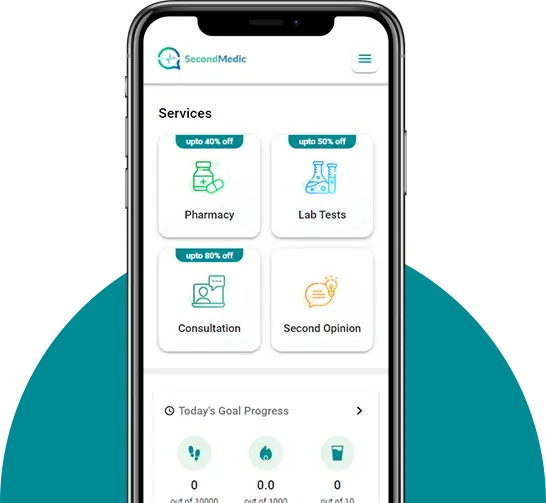- Published on: Apr 04, 2020
- 3 minute read
- By: Dr Vibhash Mishra
Urinary Incontinence: Not Normal At Any Age
Have you ever wondered if the occasional loss of urine you experience is a normal part of life? Is it something you casually dismiss as a minor inconvenience, assuming it's an inevitable consequence of aging or perhaps the after-effects of childbirth? The truth is that urinary incontinence is not an age-related problem - it can affect women of any age. In this article, we look at the intricacies of the urinary system, the signs and symptoms of urinary incontinence, and the importance of seeking timely medical advice, such as an online consultation.
Understanding the Urinary System
Imagine the human body as an intricate masterpiece in which every part plays an important role. The urinary system, a major player in this ensemble, includes the kidneys, the ureters, the bladder, and the urethra. It not only has the task of eliminating waste products, but also of maintaining a delicate balance, filtering excess fluids, and ensuring the body's internal harmony. However, disturbances in this finely tuned mechanism can manifest themselves as urinary incontinence and remind us of the fragility of the system.
The kidneys filter the blood and produce urine. The ureters transport this liquid masterpiece into the bladder, a reservoir that stores the urine and finally releases it through the urethra. It is a choreography of organs, a dance of functionality that keeps our body in balance.
Signs and Symptoms for UTI
Let us now unravel a common disruptor of this symphony — the urinary tract infection (UTI). Understanding its signs is crucial, as it often serves as a precursor to urinary incontinence. Think of the infection as a mischievous invader that threatens the delicate balance of our urinary masterpiece.
-
Frequent Urge to Urinate: A persistent urge to drain the bladder, regularly observed by means of minimum comfort, maybe a telltale sign of a brewing UTI
-
Burning Sensation During Urination: Imagine a dissonance, a burning sensation that accompanies the otherwise harmonious act of urination—a clear indication that something is amiss.
-
Cloudy or Strong-Smelling Urine: The visible and olfactory elements of urine can provide treasured clues. Cloudiness or a stinky odour may also represent underlying contamination.
Unmasking Urinary Incontinence
Now that we've laid the groundwork, let's clear up a common misconception: that urinary incontinence is merely an inconvenience that comes with age or childbirth. The prevailing view that it is an accepted part of life's journey has led many women to downplay its importance.
Imagine the following scenario: You are in a social gathering, engrossed in a conversation, and suddenly you feel an unwarranted excitement. It is unpleasant, embarrassing, and unsettling. Now imagine this was a recurring theme in your life. Would you still dismiss it as a normal part of aging or would you look for answers?
Urinary incontinence is not just a nuisance, but a profound disorder that can affect quality of life. It can lead to social withdrawal, affect mental health, and even contribute to reduced self-esteem. Recognizing its importance is the first step to tackling it head-on.
Unlocking Treatments and Online Doctor Consultation
As the desire to treat urinary incontinence grows, understanding the available treatments becomes increasingly important. It's like a treasure chest full of solutions that can restore balance to your urinary masterpiece.
-
Medications for Urinary Tract Infections: Prompt treatment of UTIs with appropriate medications is crucial to preventing their escalation into more severe forms of urinary incontinence.
-
Pelvic Floor Exercises: Picture your pelvic floor muscles as the unsung heroes of urinary control. Strengthening them through targeted exercises can significantly improve your ability to maintain continence.
-
Behavioral Therapies: Consider behavioral interventions as the choreography that refines your urinary system's dance. These may include bladder training, biofeedback, and fluid management strategies.
Taking Control of Your Urinary Health
Empowerment begins with acknowledging that urinary incontinence is not an inevitable part of life. Taking proactive steps can make a significant difference in reclaiming control over your urinary health.
-
Stay Hydrated with Ample Water Intake: Hydration is the lifeblood of your urinary system. Ensure a consistent water intake to maintain the fluidity of your urinary masterpiece.
-
Pelvic Floor Exercises for Strengthening: Picture these sporting events as the sculptor's gear, finely shaping and fortifying the muscle tissues that play a pivotal role in urinary control.
-
Regular Medical Check-Ups: Consider these check-ups as routine maintenance for your masterpiece. Regular visits to medical professionals can identify potential problems before they escalate.
Conclusion:
Urinary incontinence is not a matter to be dismissed or ignored. Understanding the intricacies of the urinary system, recognizing the symptoms of a urinary tract infection, and seeking appropriate treatment through an online doctor consultation are crucial steps to taking back control of your urinary health. Let us dispel the myth that urinary leakage is a normal part of life and encourage women of all ages to prioritize their well-being. Remember that the health of your urinary tract is an essential part of your overall vitality — do not let it be overshadowed by misconceptions or procrastination. Take the first step towards a healthier, more confident life.
Read FAQs
A. Persistent urine leakage can result from various factors, including weakened pelvic muscles, urinary tract infections, hormonal changes, or underlying medical conditions. Consult a healthcare professional to identify the specific cause and explore suitable treatments.
A. While urinary incontinence is often associated with aging, it can affect individuals of any age, including those in their 30s. Causes may include childbirth, obesity, or lifestyle factors. If you experience incontinence, seek medical advice to address the underlying issues and explore management options.
A. Yes, urinary incontinence can improve with appropriate interventions. Pelvic floor exercises, behavioral therapies, and medical treatments can enhance bladder control. Consult a healthcare professional to determine the most effective approach based on your specific condition and needs.










